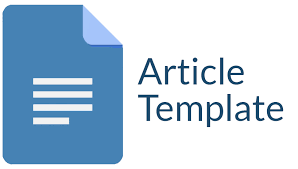IMPLEMENTASI PEMBUATAN KAJIAN LINGKUNGAN HIDUP STRATEGIS RPJMD PERIODE 2021-2026 SEBAGAI UPAYA UNTUK MENDUKUNG PEMBANGUNAN BERKELANJUTAN DI KABUPATEN TUBAN
DOI:
https://doi.org/10.26740/publika.v10n1.p231-244Keywords:
Implementation, Strategic Environmental Assessment, Sustainable DevelopmentAbstract
Tuban Regency is a place positioned at the north coast of East Java. Due to its strategic location and abundant natural resources, this area has enormous potential. To prevent the exploitation of natural resources that can damage the quality of the environment, the local government of Tuban Regency has implemented a Strategic Environmental Assessment (KLHS) to be integrated in the preparation of the RPJMD. The purpose of this study was to describe and analyze the implementation of the Tuban Regency RPJMD Strategic Environmental Study to support the concept of sustainable development. This study make use of a descriptive research design with a qualitative method. The focus of this research make use of the implementation model in line with Van Meter and Van Horn which consists of six indicators, namely policy standards and objectives, resources, communication between related organizations, characteristics of implementing organizations, dispositions, and social, economic and political environment. While the data analysis method make use of the Miles and Huberman version which consists of data reduction, data presentation, and drawing conclusions. The results of this study are based on the Van Meter and Van Horn implementation models, namely 1) Standards and Policy Objectives are clear, 2) Human resources, financial and time resources have been fulfilled, 3) Communication between implementing organizations has been well established through formal and informal communication. informally, 4) The implementation of the making of the RPJMD KLHS in Tuban Regency has been supported by the characteristics of a good implementing organization, as evidenced by the application of the precautionary principle and the discipline principle in its implementation, 5) Disposition, all implementers involved strongly support the implementation of this policy, and 6) In terms of the social, economic and political environment, all of them support the implementation of this policy, from the community, industry players to political actors.
Keywords: Implementation, Strategic Environmental Assessment, Sustainable Development
Downloads
 Abstract views: 615
,
Abstract views: 615
, PDF Downloads: 972
PDF Downloads: 972





